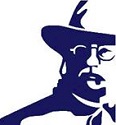 Today a task force of conservation, business, and energy industry leaders revealed its strategy for proactively investing in fish and wildlife resources to combat habitat loss and species decline while boosting American participation in the outdoors. The Blue Ribbon Panel on Sustaining America’s Diverse Fish & Wildlife Resources has recommended reallocating $1.3 billion in revenue from energy and mineral development on federal lands and waters to the Wildlife Conservation Restoration Program. These funds would go toward state-based conservation projects that could benefit thousands of species and ensure that Americans continue to have access to our unmatched wild places.
Today a task force of conservation, business, and energy industry leaders revealed its strategy for proactively investing in fish and wildlife resources to combat habitat loss and species decline while boosting American participation in the outdoors. The Blue Ribbon Panel on Sustaining America’s Diverse Fish & Wildlife Resources has recommended reallocating $1.3 billion in revenue from energy and mineral development on federal lands and waters to the Wildlife Conservation Restoration Program. These funds would go toward state-based conservation projects that could benefit thousands of species and ensure that Americans continue to have access to our unmatched wild places.
“This is a very diverse group that realized very quickly we should be redefining how we support efforts to maintain diverse wildlife populations,” said panel co-chair David Freudenthal, the former Wyoming governor, during a media event at the National Press Club in Washington, D.C. “The principle is that America has something to treasure and pass on to the next generation, but we have to realize it’s not free, and we don’t have sufficient funding from sportsmen and sportswomen spending alone in order to do that. We believe we have a sound proposal to address this.”
Annual investments from these development revenues would allow state fish and wildlife agencies to proactively manage species, rather than spend taxpayer dollars to bring endangered species back from the brink—a process that typically also creates red tape for local businesses and outdoor recreationists.
“Something we’ve known, but certainly proved true earlier this year when the greater sage grouse was not listed for Endangered Species Act protection, is that proactive conservation is effective, less costly, and more flexible for local communities than reactive conservation measures launched when a species is already in crisis,” said Steve Williams, president and CEO of the Wildlife Management Institute. “But we need a better way to fund these efforts proactively, too.”
Panel co-chair John Morris, founder of Bass Pro Shops reiterated that state fish and wildlife agencies are being asked to do more with less, and there is a tremendous need for new funding solutions that don’t rob from conservation work already being done for game species.
“As the original conservationists, America’s hunters and anglers should celebrate this kind of collaboration on real solutions for fish and wildlife,” said Whit Fosburgh, president and CEO of the Theodore Roosevelt Conservation Partnership. “This funding program is inspired, in part, by the way sportsmen have invested in conservation through our license, ammunition, and firearms purchases for decades, and we’re grateful for the panel’s efforts to highlight the benefits that proactive conservation would provide our entire country.”
Sportsmen had a strong voice on the Blue Ribbon Panel, with representatives from the Congressional Sportsmen’s Foundation, National Wild Turkey Federation, Outdoor Industry Association, Ducks Unlimited, American Sportfishing Association, National Wildlife Federation, National Shooting Sports Foundation, Wildlife Management Institute, Association of Fish & Wildlife Agencies, and Pure Fishing, Inc. Created in 2014, the panel was charged with recommending a new funding mechanism to support state fish and wildlife conservation and ensure the sustainability of these resources for future generations.
“This recommendation is an incredible opportunity for individual states to strengthen their already existing public and private lands partnerships that have proven critical for overall wildlife management efforts in the United States,” said Howard Vincent, president and CEO of Pheasants Forever and Quail Forever. “Hunting access, wildlife populations, and future generations of sportsmen and women stand to benefit greatly from full funding of the Wildlife Conservation Restoration Program.”
